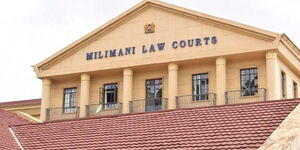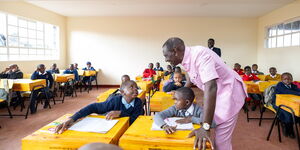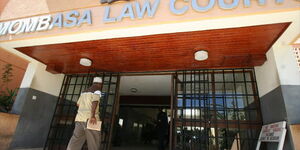Kenya’s industrial sector has hit a roadblock, registering a significant slowdown in growth for the first quarter of 2024. This downturn comes amid an overall economic deceleration, as highlighted by the Central Bank of Kenya (CBK) in its Quarterly Economic Review released on August 2.
The country's economy grew by 5.0 per cent in the first quarter, a decline from the 5.5 per cent growth recorded in the same period in 2023.
The transport storage sector was notably affected, with growth decelerating to 3.8 per cent from 6.6 per cent in the previous year.
The Standard Gauge Railway (SGR) saw a 50 per cent fare increase in January 2024, leading to an 11 per cent decline in passenger traffic and a 17.4 per cent drop in cargo transport. High fuel prices continued to hamper road transport, though the sector saw some boosts from increased passenger air traffic (14.7 percent), cargo throughput at the port of Mombasa (7.3 per cent), and petroleum products transported via the Kenya pipeline (8.7 per cent).
The industrial sector's activity remained subdued, with growth decelerating to a meager 0.1 per cent from 1.5 per cent in the same quarter of 2023. This stagnation rendered its contribution to real GDP growth negligible.
The manufacturing sector faced similar challenges, with growth slowing to 1.0 percent from 1.7 per cent. High production costs, particularly in the non-food subsector, played a significant role in this decline.
Cement production dropped by 9.8 percent, though the food subsector saw increased activity, driven by higher processing of tea and dairy products.
The construction sector experienced dismal growth at 0.1 per cent, a sharp decline from 3.0 per cent in the same quarter of 2023. This slowdown was reflected in significant decreases in key inputs, including a 12.7 per cent drop in cement consumption and a 32.4 per cent decline in bitumen imports.
Additionally, the value of building plans approved by Nairobi City County fell by 31.2 per cent.
Growth in the Electricity and Water Supply sector decelerated to 2.4 per cent from 3.8 percent. Total electricity generation increased by 1.1 per cent, driven by a substantial 90.4 percent increase in hydroelectricity generation due to increased rainfall. This growth offset declines in geothermal (-7.3 per cent), wind (-10.1 percent), and solar electricity (-9.1 per cent) generation.
While the service sectors showed robust performance, supported by finance and insurance, wholesale and retail trade, real estate, information and communication, and accommodation and food services, the industrial sector's dismal growth overshadowed these gains.
The agriculture sector remained strong, growing by 6.1 per cent compared to 6.4 per cent in the same quarter of 2023. Favourable weather conditions and government interventions, such as fertilizer subsidies, contributed to this growth. Increased production of tea (42.9 per cent), milk deliveries (30.1 per cent), sugarcane (6.1 per cent), and horticultural crop exports (30.6 per cent) were notable contributors, though coffee exports declined by 13.8 per cent.
Non-agricultural sector growth decelerated to 4.7 per cent from 5.2 per cent, contributing 3.8 percentage points to real GDP growth. The services sector maintained strong growth momentum, expanding by 6.2 per cent compared to 6.8 per cent in the same period of 2023, contributing 3.5 percentage points to real GDP growth.
The Financial and Insurance sector grew by 7.0 percent, driven by enhanced financial intermediation, increased deposits (20.9 per cent), and credit to the private sector (10.7 per cent). However, the cost of credit rose following the Central Bank Rate (CBR) increase.
The Accommodation and Food Services sector grew by 28.0 per cent, boosted by a 10.4 per cent increase in tourist arrivals at Jomo Kenyatta International Airport (JKIA) and Moi International Airport in Mombasa.
The overall economic landscape presents a mixed picture, with robust service sector performance being dampened by the industrial sector's stagnation. The CBK report points to the need for strategic interventions to revitalise the industrial sector and sustain economic growth.












